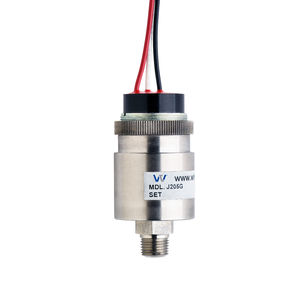
- Detection - Measurement
- Flow, Pressure and Level Measurements
- Piston pressure switch
- Whitman Controls Corporation
- Company
- Products
- Catalogs
- News & Trends
- Exhibitions
Piston pressure switch P605for liquidsstainless steeladjustable



Add to favorites
Compare this product
Characteristics
- Technology
- piston
- Fluid
- for liquids
- Material
- stainless steel
- Other characteristics
- adjustable, custom, high-precision
- Pressure range
Min.: 200 psi
Max.: 9,000 psi
- Process temperature
Min.: -65 °F
(-54 °C)Max.: 225 °F
(107 °C)
Description
The Whitman Controls P605 High Pressure High Set Point High Accuracy Pressure Switches are a line of severe application controls that can with¬stand massive pressure spikes from hydraulic systems. These switches can see pressure spikes to 9,000 psig without comprising switch integrity or functionality. They also afford the end user higher set points to com¬plement more severe environments and low set point repeatability. The P605 switches feature adjustable Military or DIN electrical connectors plus numerous fitting options to meet any custom design.
Key Features:
• Set point options: Factory set, field adjustable, or a combination
• Extensive operating temperature range
• Wide range of electrical interfaces available
• SPDT or SPST availability
• Extremely durable with the ability to withstand pressure spikes to 9,000 psig
• Higher set points to complement more severe environments
Specifications:
• Set point range: 200 to 6,000 PSIG
• Max System pressure: 9,000 PSIG
• Temperature range: -65oF to +225oF (-54oC to +107oC)
• Amps: 5 Amps Max
• Sensor Element: Piston
• Weight: 7.0 oz (varies slightly with electrical interface selection)
• Cycling: Not to exceed 20 CPM
• Wetted Parts:
Limp Diaphragm: Kapton
Seal: Loctite #271
O-Ring: Viton standard, Teflon available
Adapter / Fitting: 303 Stainless steel
Standard Thread: ¼-18 NPT male
Optional Threads: ⅛-27 NPT male, 7/16-20 UNF male
Catalogs
Other Whitman Controls Corporation products
Pressure Switches
Related Searches
- Level limit switch
- Pressure gauge
- Liquid level limit switch
- Level probe
- Liquid level probe
- Pressure switch
- Analog pressure indicator
- Float level switch
- Mechanical pressure switch
- Threaded pressure gauge
- Stainless steel level limit switch
- Waterproof pressure switch
- Bourdon tube pressure gauge
- Dial pressure indicator
- Magnetic float level switch
- Diaphragm pressure switch
- Tank level detector
- Adjustable pressure switch
- Plastic level switch
- Liquid pressure switch
*Prices are pre-tax. They exclude delivery charges and customs duties and do not include additional charges for installation or activation options. Prices are indicative only and may vary by country, with changes to the cost of raw materials and exchange rates.

















